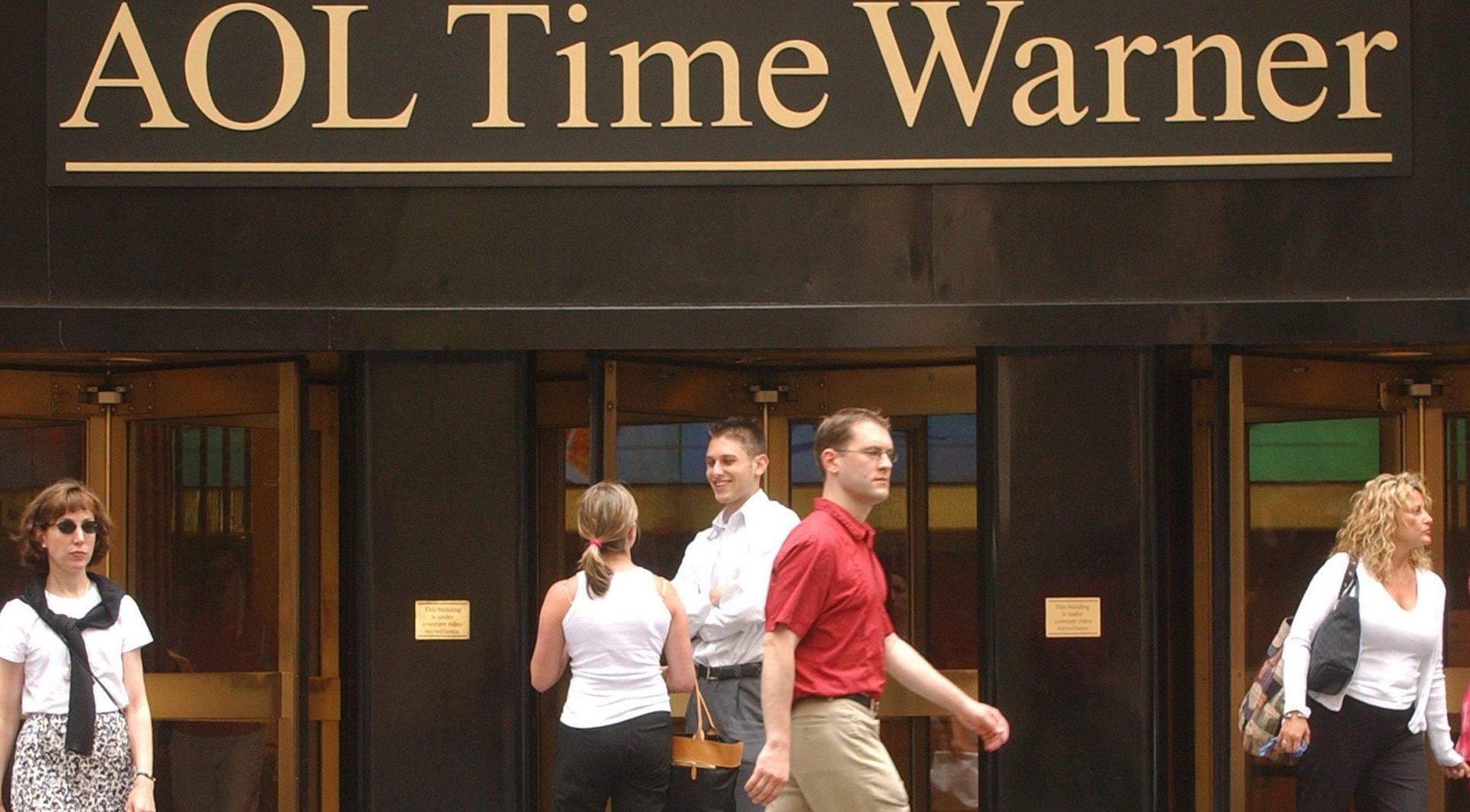An AT&T-Time Warner deal? Time Warner has seen this movie before
Time Warner—the owner of HBO, Turner, and DC Entertainment—is on the brink of an acquisition by AT&T, a telecommunications giant eager to control content it can use to fill its wireless, cable, and satellite pipes. (Bloomberg first reported the talks, and the Wall Street Journal said a deal could be completed over the weekend.)


Time Warner—the owner of HBO, Turner, and DC Entertainment—is on the brink of an acquisition by AT&T, a telecommunications giant eager to control content it can use to fill its wireless, cable, and satellite pipes. (Bloomberg first reported the talks, and the Wall Street Journal said a deal could be completed over the weekend.)
The size, speed, and rationale of a deal like this should seem very familiar to anyone who remembers the last time that Time Warner was one-half of a massive merger, a catastrophically ill-fated marriage to AOL 16 years ago.
At the time, AOL was an Internet juggernaut at the peak of the dot-com bubble, with a market cap of $224 billion and an aggressive appetite for growth. The deal made a certain sort of sense: Buying Time Warner would give AOL access to the old media company’s deep well of movies, TV programming and news, while Time Warner would be vaulted into the future of online distribution. “Synergy” was the buzzword.
After a few months of tentative courtship between the companies’ CEOs, the deal was rushed into completion over a weekend in January 2000. AOL leveraged its frothy stock price to pay $160 billion for Time Warner, which at the time had revenue of just $1 billion.
But the merger soon went disastrously wrong. The dot-com crash evaporated much of the company’s stock price—and advertising revenue, the combined operation’s lifeblood, dried up. AOL Time Warner had to write off $99 billion in goodwill while taking a fourth-quarter $45 billion charge, numbers that stunned Wall Street.
Much of the problem lay in faulty assumptions about how the companies would fit together. AOL’s advantages in dial-up Internet meant little in a world that was quickly moving to broadband connections. And Time Warner, which charged premium prices for TV and magazine advertisements, received only a fraction of those rates for online ads.
Those obstacles might have been overcome if the company had been committed to solving them. It wasn’t. The two sides of the combined firm had radically different corporate cultures. The brash, upstart tech pioneers of AOL quickly found themselves at war with the buttoned-down old media types at Time Warner.
In retrospect, it seems obvious that a relationship consummated over a weekend doesn’t give the parties much time to get to know each other.
There are reasons to think it might be different this time. For one, Comcast’s 2011 purchase of NBC Universal from General Electric shows what a successful media merger looks like. And, unlike AOL in 2000, AT&T is an established company, with a long history of orchestrating successful deals, notes Greg Portell, a media analyst at A.T. Kearney.
“They know how to make acquisitions,” Portell says. “They know how to put together diverse companies. They have a track record that wasn’t there when AOL made a similar move. “
But some the same pitfalls remain, particularly the culture-fit issue. At its core, AT&T is the former Southwestern Bell Communications, which swallowed up AT&T in 2005 and took its name. Whether the Texas-based telecom’s executives can cooperate with Time Warner’s entertainment bosses in New York and Los Angeles will go a long way to determining the merger’s success.